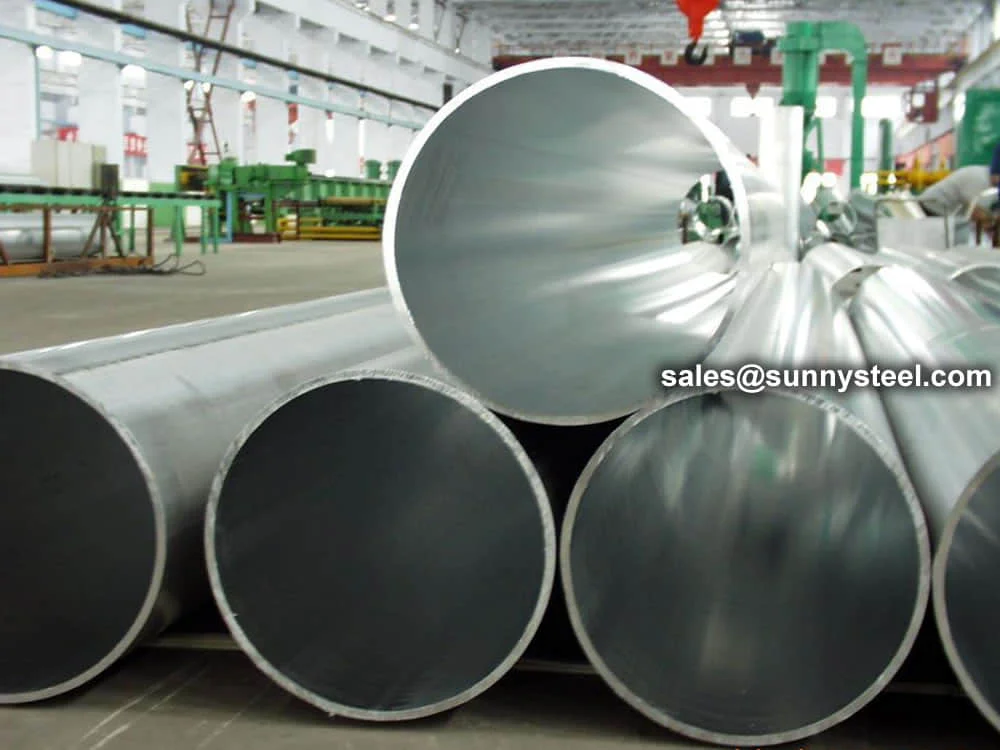
High-temp Solutions For Petrochemical Cracking Units And Fcc Systems
Stainless steel pipes for oil cracking provide superior corrosion resistance and high-temperature durability in petrochemical units, protecting against sulfidation and oxidation up to 760°c.
High-temp Solutions For Petrochemical Cracking Units And Fcc Systems
Stainless steel pipes for oil cracking provide superior corrosion resistance and high-temperature durability in petrochemical units, protecting against sulfidation and oxidation up to 760°c.
Stainless steel oil cracking pipes are specialized austenitic and ferritic alloys
engineered for severe petrochemical environments, delivering exceptional corrosion resistant stainless
pipes in fluid catalytic cracking (FCC) and thermal cracking processes. Grades such as 304, 316, 321,
and 347 provide robust protection against high-temperature sulfidation, oxidation, and carburization up to 760°C,
forming stable chromia layers that prevent scaling and metal loss in hydrocarbon-rich atmospheres.
Fabricated via hot extrusion or cold drawing with solution annealing at 1010-1120°C, stainless steel oil cracking pipes achieve superior creep strength and ductility, with stabilized variants like 321 (titanium-added) and 347 (niobium-stabilized) mitigating sensitization during welding to avoid polythionic acid attack in shutdowns. Their austenitic structure offers twice the thermal conductivity of carbon steel, optimizing heat transfer in FCC unit pipes while resisting erosion from catalyst particulates in risers and regenerators. Available in schedules 10S to 80S, outer diameters from 10.3mm to 323.9mm, and lengths up to 12m, they feature polished surfaces free of scale and seams, supporting custom beveling and U-bends for efficient installation in cracking coils and overhead condensers.
In petrochemical cracking tubes applications, these pipes excel by countering fireside corrosion
from coke burning and flue gases at 566-760°C, with 304 providing excellent naphthenic acid resistance between
260-399°C and 316 enhancing pitting protection via 2-3% molybdenum.
Compared to carbon steel, corrosion resistant stainless pipes like 347H demonstrate 20-30% higher
rupture strength at 650°C and better resistance to 885°F embrittlement, enabling thinner walls for cost savings in
ethylene crackers and hydrocracking units.
Tackling key challenges like cyanide-induced pitting in fractionator overheads or catalyst erosion in feed nozzles,
FCC unit pipes extend operational life by 40-60%, minimizing unplanned shutdowns and maintenance in
high-throughput refineries.
The following are some of the most prevalent corrosive compounds encountered across various processes in the oil and gas industry:
This positions stainless steel as a superior material unmatched by few other metals. While carbon steel may suffice in low-temperature, low-pressure, or low-corrosion environments, the diverse range of stainless steel alloys ensures optimal protection against even the most aggressive conditions in oil and gas refining processes.
This positions stainless steel as a superior material unmatched by few other metals. While carbon steel may suffice in low-temperature, low-pressure, or low-corrosion environments, the diverse range of stainless steel alloys ensures optimal protection against even the most aggressive conditions in oil and gas refining processes.
We perform triple polishing to achieve a perfectly bright and smooth surface, free from any quality deficiencies.
Our precision equipment enables comprehensive testing in accordance with required standards, complemented by Positive Material Identification (PMI) tests to verify material integrity prior to delivery.
Our stainless steel round bars are sourced from premium suppliers Jiuli and Baosteel in China, ensuring rigorous quality control from the outset.
Typical composition for common grades used in oil cracking (wt. % max unless specified; balance Fe).
| Grade | C | Mn | Si | P | S | Cr | Ni | Others |
|---|---|---|---|---|---|---|---|---|
| 304 | 0.08 | 2.00 | 0.75 | 0.045 | 0.030 | 18.0-20.0 | 8.0-10.5 | N: 0.10 |
| 316 | 0.08 | 2.00 | 0.75 | 0.045 | 0.030 | 16.0-18.0 | 10.0-14.0 | Mo: 2.0-3.0 |
| 321 | 0.08 | 2.00 | 0.75 | 0.045 | 0.030 | 17.0-19.0 | 9.0-12.0 | Ti: 5xC min |
| 347 | 0.08 | 2.00 | 0.75 | 0.045 | 0.030 | 17.0-19.0 | 9.0-13.0 | Nb+Ta: 10xC min |
| 2205 (Duplex) | 0.03 | 2.00 | 1.00 | 0.030 | 0.020 | 22.0-23.0 | 4.5-6.5 | Mo: 3.0-3.5; N: 0.14-0.20 |
Minimum values at room temperature for annealed condition.
| Grade | Tensile Strength (MPa) | Yield Strength (MPa) | Elongation (%) | Hardness (HB max) |
|---|---|---|---|---|
| 304 | 515 | 205 | 40 | 201 |
| 316 | 515 | 205 | 40 | 217 |
| 321 | 515 | 205 | 40 | 217 |
| 347 | 515 | 205 | 40 | 217 |
| 2205 | 620 | 450 | 25 | 293 |
High chromium protects against sulfur-induced corrosion in FCC regenerators and cracking coils up to 760°C.
Austenitic grades maintain integrity under prolonged heat and pressure in petrochemical cracking tubes.
Molybdenum-enhanced alloys resist cyanide pitting and catalyst wear in overhead lines and risers.
321 and 347 grades prevent sensitization for crack-free welds in high temperature petrochemical pipes.
Reduces downtime by 40-60% in FCC units, lowering costs for stainless steel oil cracking pipes.
Supports seamless/welded forms with custom tolerances for petrochemical cracking applications.
We typically utilize grades 304, 316, 405, and 410. Grade 304 performs exceptionally well in temperatures ranging from 260–399°C (500–750°F), while 400-series stainless steels provide enhanced resistance at higher temperatures up to 343–371°C (650–700°F). Additionally, grade 304 offers superior resistance to naphthenic acid corrosion.
| Feature | 304/316 | 321/347 | Carbon Steel |
|---|---|---|---|
| Corrosion Resistance | Excellent (Sulfidation) | Superior (Stabilized) | Poor (Oxidation) |
| Max Temp (°C) | 760 | 815 | 540 |
| Creep Strength | High | Very High | Low |
| Cost | Medium | Medium-High | Low |
| Applications | FCC Risers | Furnace Tubes | Low-Temp Lines |
| Tensile Strength (MPa) | 515 min | 515 min | 415 min |
| Key Advantage | Pitting Resistance | Anti-Sensitization | Economical |
The following table provides key dimensions for ANSI stainless steel pipes according to ASTM A312/ASME SA312 standards
| Nominal Pipe Size | OD (inches) | OD (mm) | Schedule 5S (inches) | Schedule 5S (mm) | Schedule 10S (inches) | Schedule 10S (mm) | Schedule 40S (inches) | Schedule 40S (mm) | Schedule 80S (inches) | Schedule 80S (mm) |
|---|---|---|---|---|---|---|---|---|---|---|
| 1/8 | 0.405 | 10.3 | 0.035 | 0.89 | 0.049 | 1.24 | 0.068 | 1.73 | 0.095 | 2.41 |
| 1/4 | 0.54 | 13.7 | 0.049 | 1.24 | 0.065 | 1.65 | 0.088 | 2.24 | 0.119 | 3.02 |
| 3/8 | 0.675 | 17.1 | 0.049 | 1.24 | 0.065 | 1.65 | 0.091 | 2.31 | 0.126 | 3.2 |
| 1/2 | 0.84 | 21.3 | 0.065 | 1.65 | 0.083 | 2.11 | 0.109 | 2.77 | 0.147 | 3.73 |
| 3/4 | 1.05 | 26.7 | 0.065 | 1.65 | 0.083 | 2.11 | 0.113 | 2.87 | 0.154 | 3.91 |
| 1 | 1.315 | 33.4 | 0.065 | 1.65 | 0.109 | 2.77 | 0.133 | 3.38 | 0.179 | 4.55 |
| 1-1/4 | 1.66 | 42.2 | 0.065 | 1.65 | 0.109 | 2.77 | 0.14 | 3.56 | 0.191 | 4.85 |
| 1-1/2 | 1.9 | 48.3 | 0.065 | 1.65 | 0.109 | 2.77 | 0.145 | 3.68 | 0.2 | 5.08 |
| 2 | 2.375 | 60.3 | 0.065 | 1.65 | 0.109 | 2.77 | 0.154 | 3.91 | 0.218 | 5.54 |
| 2-1/2 | 2.875 | 73 | 0.083 | 2.11 | 0.12 | 3.05 | 0.203 | 5.16 | 0.276 | 7.01 |
| 3 | 3.5 | 88.9 | 0.083 | 2.11 | 0.12 | 3.05 | 0.216 | 5.49 | 0.3 | 7.62 |
| 4 | 4.5 | 114.3 | 0.083 | 2.11 | 0.12 | 3.05 | 0.237 | 6.02 | 0.281 | 7.14 |
| 5 | 5.563 | 141.3 | 0.109 | 2.77 | 0.134 | 3.4 | 0.258 | 6.55 | 0.375 | 9.52 |
| 6 | 6.625 | 168.3 | 0.109 | 2.77 | 0.134 | 3.4 | 0.28 | 7.11 | 0.432 | 10.97 |
| 8 | 8.625 | 219.1 | 0.109 | 2.77 | 0.148 | 3.76 | 0.277 | 7.04 | 0.322 | 8.18 |
| 10 | 10.75 | 273.1 | 0.134 | 3.4 | 0.165 | 4.19 | 0.307 | 7.8 | 0.365 | 9.27 |
| 12 | 12.75 | 323.8 | 0.156 | 3.96 | 0.18 | 4.57 | 0.33 | 8.38 | 0.375 | 9.52 |
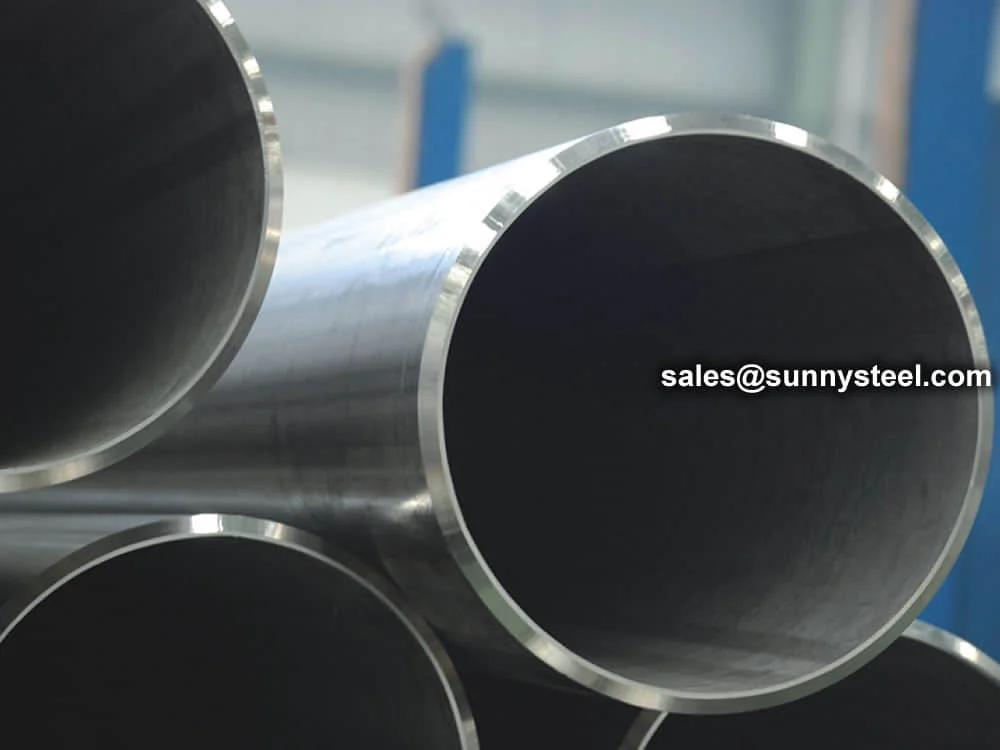
Heat resisting stainless steel pipes are premium a...
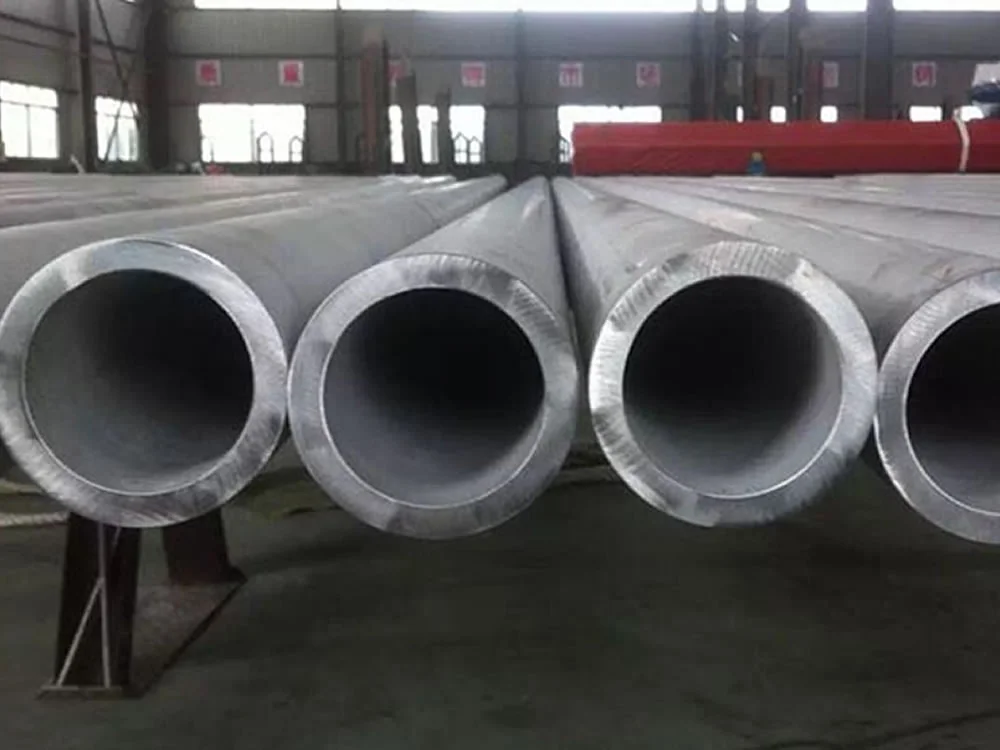
A seamless stainless steel pipe is a metal tube ma...
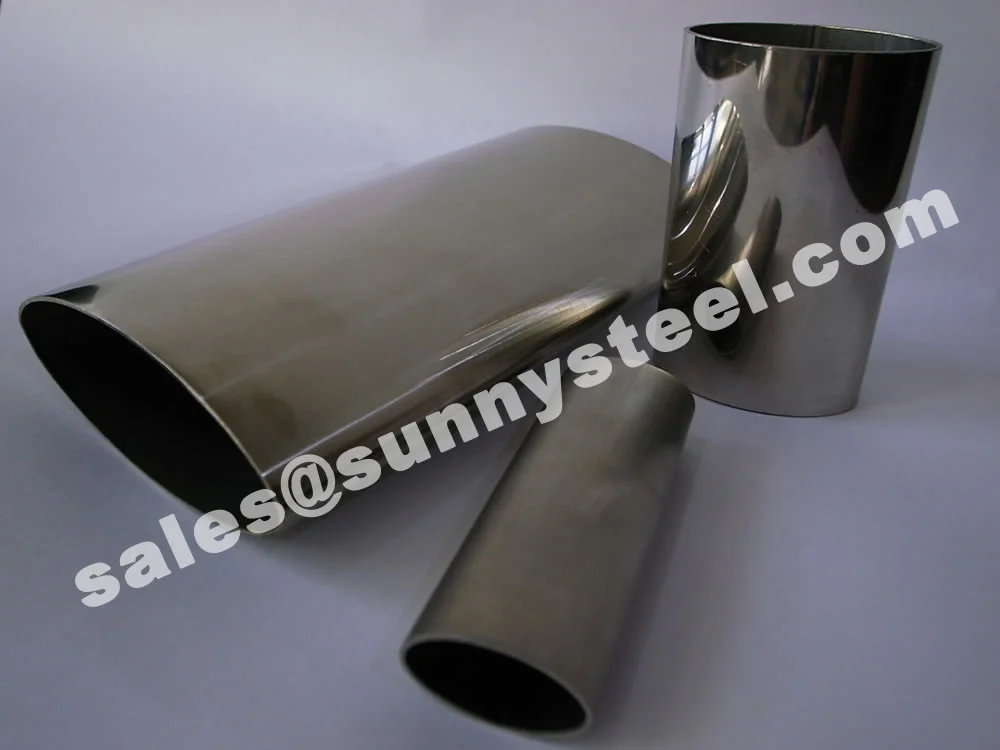
Stainless steel oval pipes deliver superior corros...
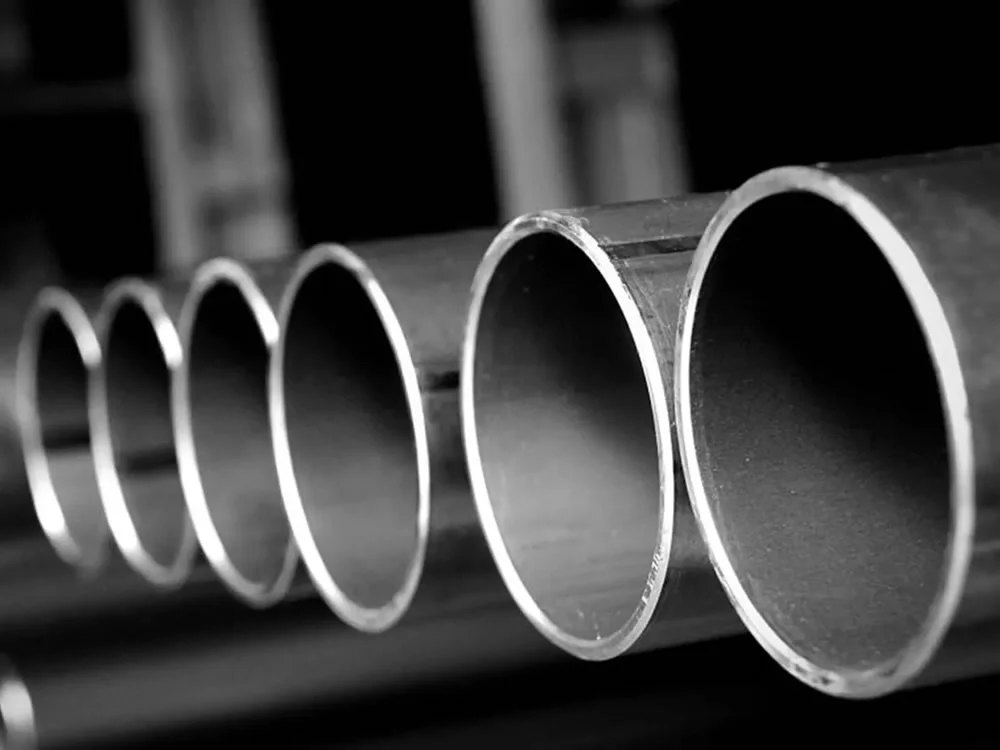
Stainless steel welded pipes / tubes are made from...